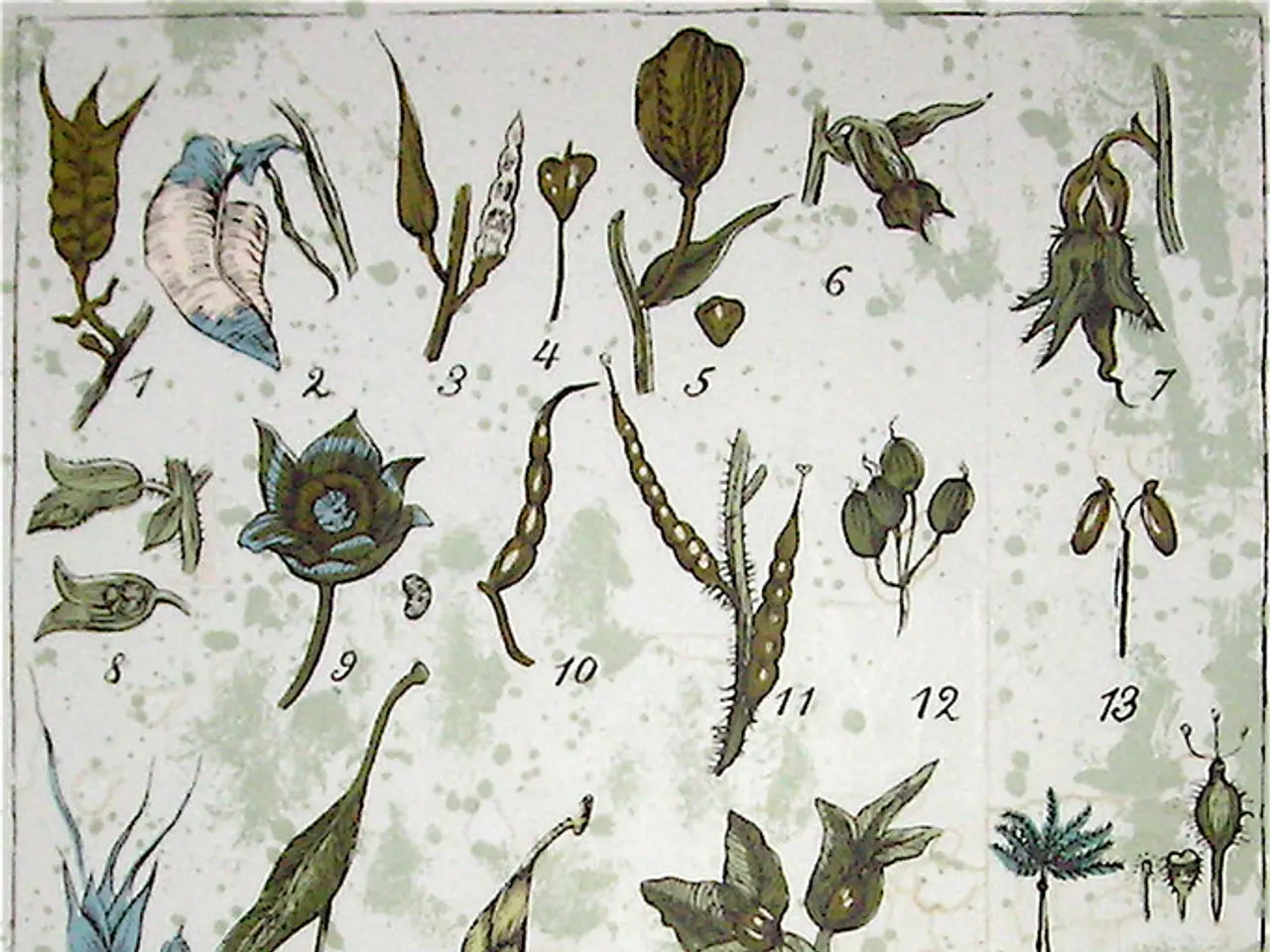Discovering Speedwell and Its Applications
The Speedwell plant, a member of the Veronica genus, is a fascinating and versatile species that has captured the attention of botanists, chefs, and healers alike. With approximately 500 species found worldwide, including in the United States, Speedwell thrives in various environments and offers a range of benefits.
Speedwell leaves, characterised by their toothed edges and oppositely arranged layout, are typically 1/2 to 2 inches long and have ovate shapes. The plants can grow up to 4 feet, with stems that may be smooth or hairy, and some species display an upright growth habit while others sprawl.
In its natural habitat, Speedwell prefers sunny places with moist, rich, loamy soil. It thrives in disturbed areas such as waste places, gardens, lawns, and pastures. Some species, like American Speedwell (Veronica americana), grow in moist areas like bottomlands, stream banks, and wetlands.
Speedwell's harvesting period for medicinal use is in spring or early summer before it flowers. Historically, Speedwell has been used as a medicinal plant in European cultures and by Native American tribes, including the Choctaw, who used it in teas for pain relief. Recent research has indicated that Speedwell has anti-inflammatory, antimicrobial, and antioxidant properties, and a 2015 study found that Speedwell extract has the potential as an anti-wrinkle agent for human skin. Another study even found that Speedwell's antiviral properties make it a promising candidate for treating drug-resistant strains of the herpes viral infection.
Speedwell is not just beneficial for health, but it also offers culinary delights. The plant is edible in its entirety, with most common uses being the flowers, young shoots, and leaves. Its flowers, which may be white, blue, purple, or pink, with a light blue or blue-purple common among many of the wild species, add a unique flavour to salads and other dishes.
Speedwell thrives in cool, moist weather and grows most in spring when the soil is cool and damp. It is worth noting that while many species of Speedwell are long-lived perennial, herbaceous weeds, some were introduced from Europe and have naturalized through large parts of the United States.
In conclusion, Speedwell is a remarkable plant with a rich history and a multitude of uses. Whether for medicinal purposes, culinary delights, or simply as a hardy addition to the garden, Speedwell is a plant worth exploring further.
Read also:
- Emerging Fashions in Marijuana Storage: TVLPK's Attractive Gear for Cannabis Carrying
- The Distinction Between Sexual Identity and Gender Identity
- Symptoms, Prevention Strategies, and Management Methods for Measles
- Climate Change Impact Mitigation in Health: Reducing the Disparity of the Health Sector's Exposure to Climate Change Challenges





